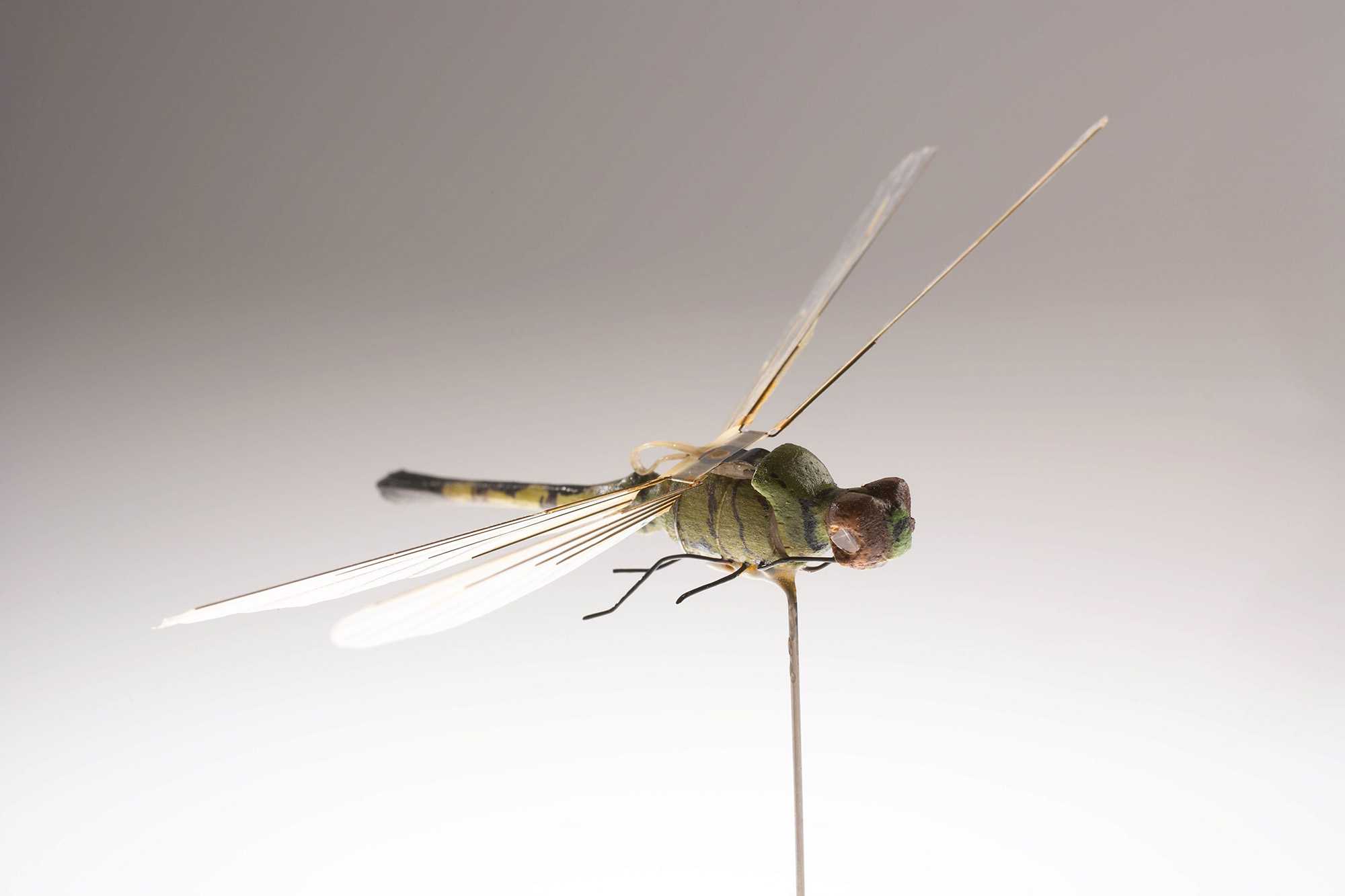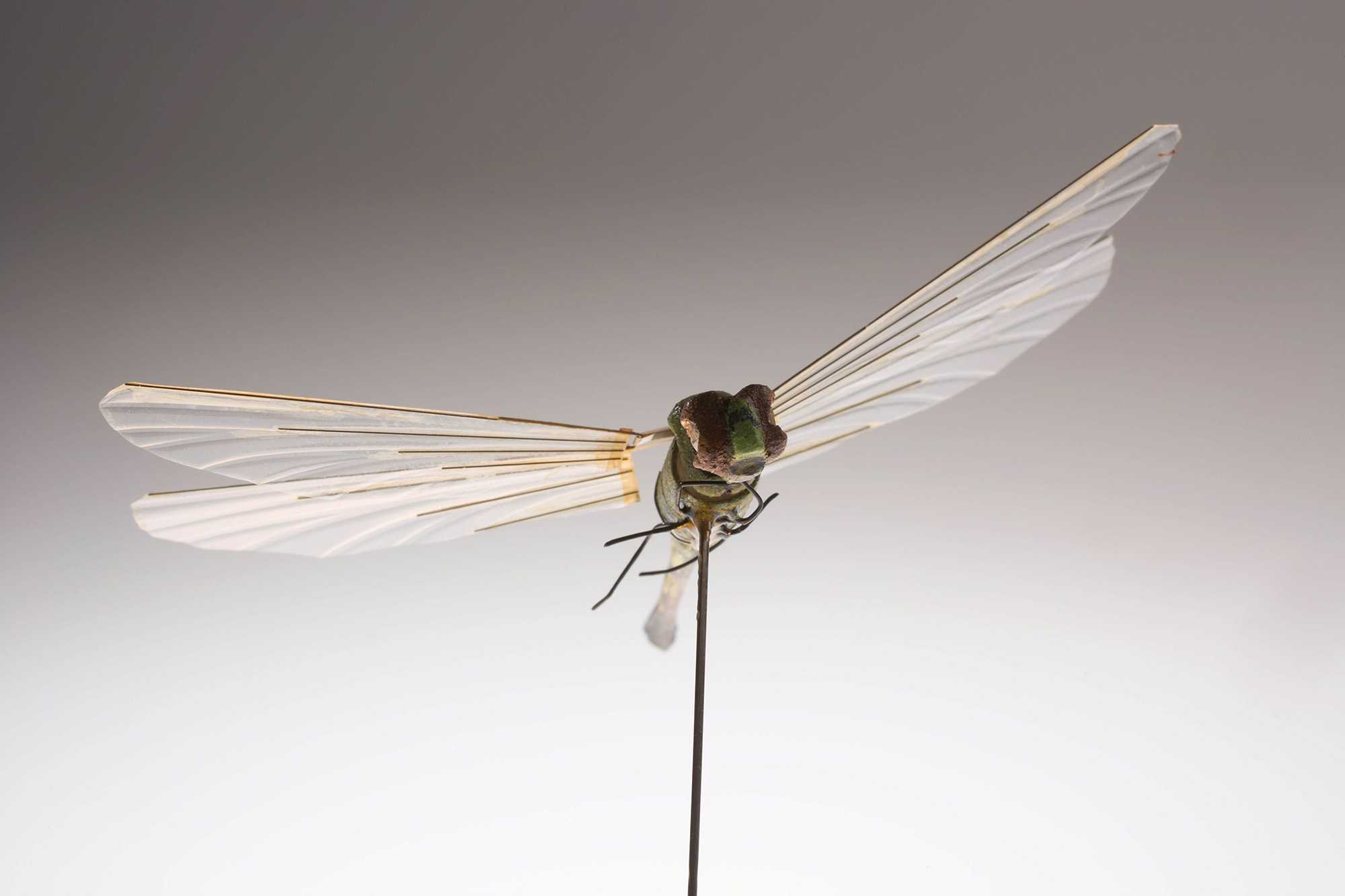Artifact Details

The original listening device was disguised a bumblebee, but the dragonfly design was easier to maneuver.
Developed by CIA’s Office of Research and Development in the 1970s, this micro unmanned aerial vehicle (UAV) was the first flight of an insect-sized vehicle (insectothopter). It was intended to prove the concept of such miniaturized platforms for intelligence collection.
Insectothopter had a miniature engine to move the wings up and down. A small amount of gas was used to drive the engine, and the excess was vented out the rear for extra thrust. The flight tests were impressive. However, control in any kind of crosswind proved too difficult.
Artifact Specs
6 cm x 9 cm x 1.5 cm
(L x W x H)
Additional Photos




Videos
The Debrief: Behind the Artifact - Insectothopter
This is no ordinary dragonfly. It got its spy wings in the 1970s after the CIA’s Office of Research and Development created Insectothopter. And even though it was never operational, it’s still one of our favorite artifacts to share.
The dragonfly was selected for this program after the bumblebee turned out to not work quite so well. Bumblebees fly in really erratic patterns, and so it would have been noticed if it stopped to hover, and someone may have batted it away, because they do sting. This dragonfly was intended to be a listening device. It had a small engine that would make its wings flap up and down, and it was directed and guided by a bi-metallic strip on the back and a laser beam. It could actually fly 200 meters in 60 seconds. This data link actually back here with the laser was how we were able to intercept the sound that it was picking up.
The CIA dragonfly ultimately proved not to be operational, because in crosswinds over five miles an hour, it just was taken off of its trajectory. But it stimulated further research into using UAVs, which this was the smallest of its kind at this point in history.
Insectothopter: The Bug-Carrying Bug
If you were told that a company had just invented a robotic dragonfly and it was flying around today, you might not be impressed. However, CIA developed this “Insectothopter” and flew it in the 1970s!
CIA had developed a miniature listening device that needed a delivery system, so the Agency’s scientists considered building a mechanical bumblebee to carry it. However, they found that the bumblebee was erratic in flight and scrapped the idea. Then an amateur entomologist on the project suggested a dragonfly, and this prototype was built.
Crafted by a watchmaker, Insectothopter had a miniature fluidic oscillator to propel the wings up and down at the proper rate to provide both lift and thrust. A small amount of propellant produced gas to drive the oscillator, and extra thrust came from the excess gas vented out the rear.
A laser beam provided guidance and acted as the data link for the audio sensor payload. This is the first flight of the insect-sized unmanned aerial vehicle called Insectothopter. Flight tests were impressive. Performance measures indicated a range of 200 meters and flight time of 60 seconds with a 1-gram launch weight.
But because control in even a slight crosswind proved too difficult to overcome, Insectothopter never became operational.
